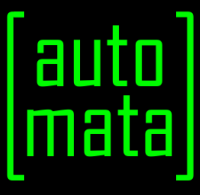We talked about digital sound as well as some poetic and visual art matters on a panel on Feb 15 here at MIT with David Cossin, Ben Hogue, yours truly (Nick Montfort), Evan Ziporyn, and Joe Paradiso … backed for a while by ppg256-3:
Taroko Gorge Remixed & Installed
Designer Gulch by Brendan Howell is another remix of my oft-remixed poetry generator, Taroko Gorge. This one is installed in the lobby of the Berliner Technische Kunsthochschule.
I Thought It Was Art, Man
But my credit card company says otherwise…

“Electrifying Literature” Deadline
An exhortation for those creating or researching electronic literature to please submit to Electrifying Literature: Affordances and Constraints, the 2012 Electronic Literature Organization conference. The gathering will take place June 20-23, 2012 in Morgantown, West Virginia. A juried Media Arts Gallery Exhibit will be held from Wednesday, June 13 through Saturday, June 23, 2012 at The Monongalia Arts Center. Registration costs have been kept down to make it easier for writers and artists who don’t have institutional travel support to be part of the event.
The deadline for abstracts & proposals is November 30, by the way.
Concrete Perl
h d d k x v d r k y p s b a b a n i k d u u
v r c q i e z j s s v h t l i r k k n k n n m
z b q b k x m d u z f s g p u z v y v m f s
i u p p z r n t k f b h v q l x w h x f x c i w v f
k h l a i o q s z n z u n c l w d a d a m j b e
m n b q o u o e n s r b o j b q q t q s f n i f u l
Concrete Perl
a set of four concrete poems realized as 32-character
Perl programs
by Nick Montfort
– All the Names of God
– Alphabet Expanding
– ASCII Hegemony
– Letterformed Terrain
You can download the linked Perl files and/or simply copy and paste the following four lines, which correspond to the four titles above:
– perl -e '{print"a"x++$...$"x$.,$,=_;redo}'
– perl -e '{print$,=$"x($.+=.01),a..z;redo}'
– perl -e '{print" ".chr for 32..126;redo}'
– perl -e '{print$",$_=(a..z)[rand$=];redo}'
For purposes of determining the platform precisely and counting characters, the rules of Perl Golf are
used. These rules, for instance, do not count the (optional) newline at the end of a one-line program. The Concrete Perl programs work on all standard versions of Perl 5.8.0 and have been verified as 32 characters long using a count program.
These programs are also written to work and to be visually pleasing on terminal windows (or terminals) of any geometry.
To present them all at once, you can tile four windows and run one program in each window. For instance, running Linux with Compiz as the window manager and the Grid plugin installed and active, create four windows and assign them to the four corners of the screen using Ctrl-Alt-Num Pad 7, Ctrl-Alt-Num Pad 9, Ctrl-Alt-Num Pad 1, and Ctrl-Alt-Num Pad 3. In this
mode if the resolution of the display is not particularly high, you may wish to decrease the font size a notch in each window.
Concrete Perl was released onto the demoscene and discussed by me for the first time in my talk “Beyond Data-Driven Poetry: ppg256 and Concrete Perl,” on the panel “Literary Practice and the Digital Humanities, Redux: Data as/and Poetry,” Digital Humanities 2011, Stanford, June 22, 2011.
I have printed the four programs/poems on a dot matrix printer on business cards and am handing them out and, in some cases, adding them to the “Interactive Poetry Wall” at Stanford University’s “Coho” coffeehouse.
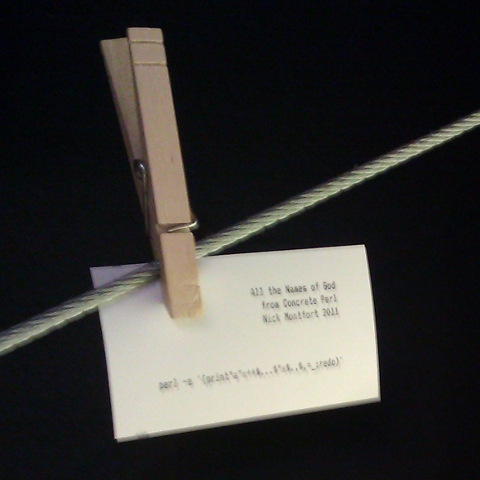
p j o c v v n v t g k t i s h f j v e d v c e b
p z p e s s d o f z v p s t z i b f j w l
p z y f j w k k p k y n v f g u m r m k x i w l s a t n b a f
w q y u t p r p w p m d x j c j j n z k a j z i s
w a w q k j y y k c r d i b p f z h i x i
c o x f p f u d g z y f b y v q v g v o j l
Practice Safe Public Art
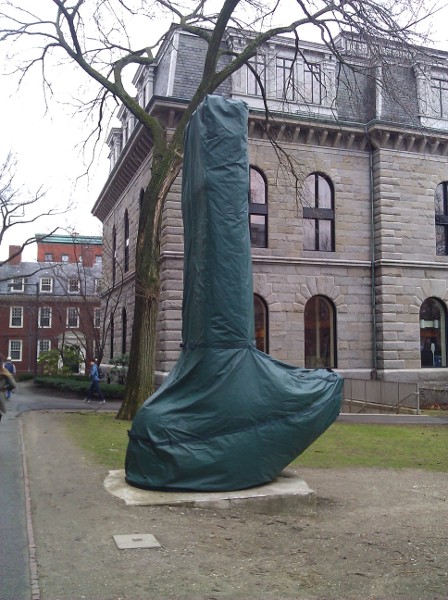
(Seen at a university in Cambridge, MA – not MIT or Lesley University.)
Get Yer Art, Culture, and Game Studies
This and That Thought, a Turbulence commission, is a robot riot. (Turn on your sound before beginning!) The new issue of Culture Machine grapples with e-lit and the digital humanities and looks to be made of win. And there’s the happy occasion of a new issue of Game Studies, focused on game reward systems.
Label This One a Failure
It’s tough to write about the ideas that didn’t work out. Sometimes the negative results actually aren’t very interesting, and it’s better not to discuss them. In other cases, it’s impolite to point out other people’s roles – to blame them – and impossible to discuss the failure otherwise. But when a failure is not too big of a deal, possibly instructive to bring up, and as least as much my fault as anyone else’s, that rare opportunity to post about it presents itself.
In 2005, those of us blogging at Grand Text Auto had the idea of starting a “label.” We wanted something that would riff on our blog’s name and serve to showcase larger-scale projects that we did. The idea was that our creative projects would benefit from being associated with each other, just as our blog writing was more lively and had wider reach thanks to the shared context of Grand Text Auto.
After going through our usual best practices process of name development – perhaps, based on experiences like these, I’ll one day start a naming firm – we chose to call the label [auto mata]. With the square brackets and everything, if you want to really give a shout-out, although “Auto Mata” could work if that’s what fits your house style.
I offered to design the logotype. Now, I’m much less likely to start a career in graphic design, and certainly couldn’t drive that auto very far if I did, but I do like to indulge my dilettantish design interests when the opportunity presents itself. This is what I came up with:
Admittedly, it doesn’t exactly slap one in the face.
I don’t think my understated logo was the real problem with [auto mata], though. First Michael Mateas and Andrew Stern’s Façade (July 2005) and then my own Book and Volume (November 2005) were released “under” (perhaps “with” is a better preposition) this label. And that was it. No other “extraordinary e-lit, digital art, and computer games” appeared as [auto mata] releases, which was one big problem. A list of two things isn’t doing that much helpful association or offering people very much to browse. I think if we had kept adding a piece to the [auto mata] catalog every few months, we’d have accumulated a very interesting collection that people would be looking at. We might even encourage the crossing of boundaries between (the stereotypes of) literary work, visual art, and computer games that Grand Text Auto was all about. But we weren’t all regularly doing larger-scale projects that were downloadable. [auto mata] couldn’t really, in any straightforward way, “release” an immense, functional Atari VCS joystick.
Another problem, though, is that [auto mata] was just a list on a Web page. We didn’t build much buzz around [auto mata] itself, or work to promote the label per se as opposed to the two pieces that were released under it. Perhaps this work would have done itself to some extent as our list of publications grew and our offerings drew in people from different communities. But, unfortunately, the work wasn’t done.
Michael, Andrew, and I often mentioned [auto mata] in promoting our pieces. The site is still up. But now it’s 2011, and it’s worth noting that both Façade and Book and Volume have been published again in the fine context of the Electronic Literature Collection, volume 2. Although some “previous publication” information is included for each piece in the Collection, Michael, Andrew, and I all neglected to tell the editors that these two pieces are [auto mata] releases, so that information (provided within the pieces) doesn’t appear on the introduction pages where other bibliographic information is available.
Ah, well. I don’t regret the discussion that led to our developing [auto mata]; nor do I regret the not particularly onerous efforts that we took to get this label launched. In a different situation, such a label might have served not just to catalog work, but as an incentive or rallying point for the Grand Text Auto bloggers in creating work that could be proudly presented alongside other pieces. Perhaps a similar label could still do that for a different group of people.
Book Arts and Broadsides Showcased
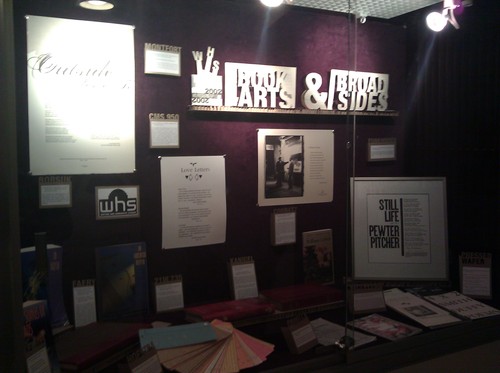
MIT’s Building 14 has a great new display thanks to poet Amaranth Borsuk, who is a Mellon postdoctoral fellow in the Writing & Humanistic Studies program, where I also work. There are some wonderful pieces from many of my colleagues and their students, all of them displayed brilliantly. I’ll mention the digital tie-ins: The broadside “Love Letters,” done in one of my graduate CMS.950 Workshop classes, consists of computer-generated poems produced by a Manchester Mark I emulator. These were set on a letterpress by the class thanks to the Bow & Arrow Press’s John Pyper. And Peer Hofstra, who took my 21W.750 Experimental Writing class last semester, did an extraordinary untitled book for his final project. It’s made of punched cards, with the words are formed by alphabetically-arranged letters punched out from those pages. Each word is some are subsequence of the alphabet, so “APT” can occur, while “APE” cannot. Alex Corella’s Experimental Writing final project, which cuts up and rearranges the text on Cambridge historical plaques, is also on display. If you’re on campus, do stop by to see the case, which is by the elevator on the first floor of Building 14. It will be up for at least this month, December 2010.
Colloquium Past, Conference to Come in Mexico
I’ve recently returned from a great trip to Mexico City. I was at the 5th Mexican International Colloquium on Computational Creativity presenting alongside two other foreign guests, Graeme Ritchie and Dan Ventura, and two local researchers, Rafael Pérez y Pérez and Eduardo Peñaloza. There was a productive and lively roundtable on interdisciplinary work and collaboration the day before the talk, too. Rafael Pérez y Pérez, a collaborator of mine, arranged the colloquium and was a very gracious host, making sure that we got to and from the airport, to all of the colloquium events, and to several excellent meals.
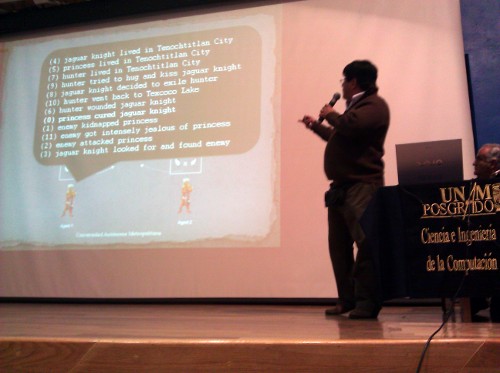
I have a few things to mention about the 5th MICCC, but I’d like for this post to be mainly forward-looking rather than backward-looking. That’s because ICCC-11, the 2011 International Conference on Computational Creativity, is an event on the same topic as this recent colloquium, and it will be taking place in the same city thanks to the local organizing work of our wonderful host, Rafael. Although the colloquium was intellectually rich and I enjoyed visiting Mexico City for its own sake, I was also very pleased because I was anticipating this larger-scale academic gathering that will be taking place April 27-29. In part, I was reminded of the conference because I and the other organizers, Rafael, Graeme, and Dan, spent a good bit of the time working to make the remaining decisions and to prepare for ICCC-11. But even just walking around the city, I had in mind how much other computational creativity researchers would enjoy coming to México.
At the colloquium, I was the only one who didn’t discuss a large-scale system that is somehow related to the creative process. (I do have a such a system, Curveship, but I wanted to focus on something else in this talk.) I spoke about creative computing and the relationship that this area has to computational creativity. In creative computing, the computer is seen as a medium and platform for human creative work. There’s a strong relationship between this area and computational creativity, but there are some distinctions, too. I spoke about a very short, simple Commodore 64 BASIC program:
10 PRINT CHR$(205.5+RND(1)); : GOTO 10
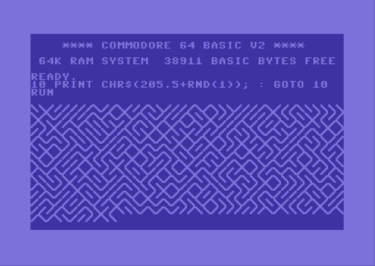
This one-line program is the focus of a deep investigation that I am undertaking with nine other authors. We plan for this study to result in a single-voice academic book – not an edited collection, not a “chapter book” with separately authored segments, but something that reads like a single-author book but is written by ten people. We are still in the early stages of writing this book, but it’s our hope that 10 PRINT CHR$(205.5+RND(1)); : GOTO 10 by Nick Montfort, Patsy Baudoin, John Bell, Ian Bogost, Jeremy Douglass, Mark Marino, Michael Mateas, C. E. B. Reas, Mark Sample, and Noah Vawter will be published by the MIT Press in 2012. (Yes, the book’s title is the program itself.) Since the colloquium focused on interdisciplinary work and collaboration, this seemed like a nice project to discuss, even though the ten of us working on this project are not trying to model the creative process using computation. I described how the study of this program shed additional light on the relationship between platform and creativity, and how it suggested that computational creativity models try to take into account that relationship.
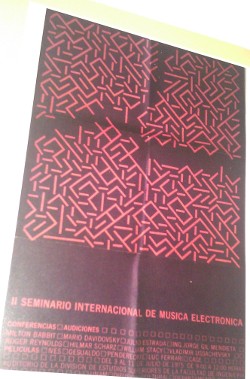
The other talks offered some excellent descriptions of and discussions of computational creativity systems: MEXICA, DARCI, and STANDUP (along with its predecessor, JAPE). These systems, and the things that have been done with them, are all great examples of creative computing, by the way, in addition to being computational investigations of creativity! I could do a post this long covering just the new thoughts that have come to me about these projects, each of which I knew about before. For now, I’ll refer you to the abstracts and links for more on those projects.
Coming up: The 2011 International Conference on Computational Creativity, April 27-29 in Mexico City
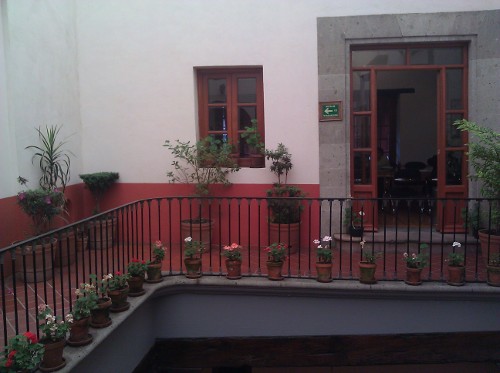
I’ve been to Mexico City before, but this was my first trip to the city’s main square, the Zócalo. This is the area where ICCC-11 will take place. It’s an amazing sight. You can see that Mexico City is mind-bogglingly big as you fly in, but the Zócalo is massive in a different way. The plaza and the area is human-scale (designed for pedestrians and very walkable, with many shops and restaurants) while also being tremendous and impressive. On the north is the cathedral; the National Palace, where President Calderón works, is to the east. An enormous Mexican flag flies from the National Palace during the day. To the west are several buildings, including the Best Western Majestic Hotel, which will be offering a discounted rate for ICCC-11. Just off the plaza, between the Cathedral and the National Palace, is where ICCC-11 will be held – at La Casa de la Primera Imprenta. The first printing press in the Americas was installed in 1536 in this building. It now offers a conference facility of just the right size for ICCC-11 presentations and demos, several galleries, and a bookstore.
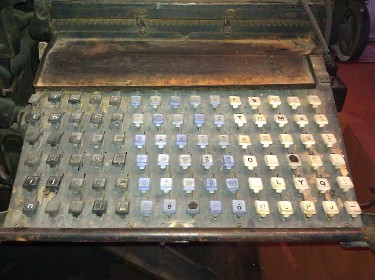
The Autonomous Metropolitan University, Cuajimalpa is the host institution for ICCC-11, which is also supported by UNAM’s postgraduate program in computer science and engineering. The colloquium that UAM-Cuajimalpa put on with UNAM was well-attended by students and faculty who had some good questions for us. I know that we will have great local arrangements for ICCC-11; the participation we had in the colloquium suggests that we will be part of some good conversations (and, no doubt, see some good presentations and demos) from local ICCC-11 attendees.
So, I hope to see you readers who work in computational creativity in Mexico City at the end of April. I’m the publicity chair for ICCC-11, but in addition to publicizing the conference, I’m glad to email with anyone who has questions about the conference or about visiting Mexico City. And, remember that the deadline for submissions (of short papers, long papers, or show-and-tell proposals) is December 13, less than a month away now: The call for papers has the details, and there is more information on other parts of the ICCC-11 site.
Creativity (ICCC-11) Deadline Looms
A reminder that the deadline for the 2nd International Conference on Computational Creativity, taking place in Mexico City, April 27-29, 2011, is now in less than two months:
- December 13, 2010 – Submission deadline
- February 14, 2011 – Authors’ Notification
- March 14, 2011 – Deadline for final camera-ready copies
- April 27-29, 2011 – ICCC in Mexico City
I posted about the conference back in July; the CFP has been out since then and information has been up on the Web. Our site (I’m one of the organizers) now has resources for authors preparing papers as well as travel information.
Good luck to those preparing papers. I’ll hope to see some from Post Position and Grand Text Auto there in Méxio, D.F. at the end of April.
Code is Beauty, Beauty Code
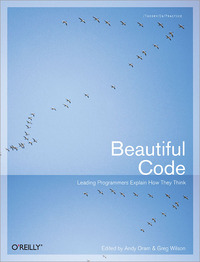 In recent years, I’ve written a series of 1k (that is, exactly 1024 character) reviews on here. This ruse has helped me compose succinct (and possibly useful) notes about many things that I wouldn’t have otherwise written about. But some things that are worth reviewing, such as a documentary about interactive fiction, are really better treated in a bit more depth. Given my interest in the aesthetics of code, and in code that produces aesthetic output, a book entitled Beautiful Code: Leading Programmers Explain How They Think is certainly one of those things.
In recent years, I’ve written a series of 1k (that is, exactly 1024 character) reviews on here. This ruse has helped me compose succinct (and possibly useful) notes about many things that I wouldn’t have otherwise written about. But some things that are worth reviewing, such as a documentary about interactive fiction, are really better treated in a bit more depth. Given my interest in the aesthetics of code, and in code that produces aesthetic output, a book entitled Beautiful Code: Leading Programmers Explain How They Think is certainly one of those things.
Beautiful Code is an edited collection of 33 articles by a well-known publisher of technical books. The articles deal with how programmers solved a variety of problems, some of them very general computational problems, others quite specific to particular systems and applications. Several of the authors discuss their own code. The book is part of the Theory in Practice series with Beautiful Data, Beautiful Architecture, and Beautiful Security.
Beautiful Code is a success in several ways. It widens the conversation about code and the innovative development of it beyond particular programming languages, which have often been silos for such discussion has taken place in the past. At least, book-length discussion of programming – in textbooks, in introductory and reference books, and in “tips and tricks” books – has often been language-specific. While encompassing many systems and code in many languages, the book doesn’t take the position that the programming language can be abstracted away, that knowing about data structures, algorithms and an arbitrary programming language allows on to say all that can be said about how to program.
The first article is a particularly excellent one. In it, Brian Kernighan discusses 30 lines of regular expression matching C code which Rob Pike wrote as an example in an hour or two. This concise article deals with how to solve the core of the regular expression problem elegantly and correctly, but it also touches on many other important aspects of code and programming. By suggesting a series of modifications, Kernighan shows that code is an element of future programs rather than simply a fixed solution. Kernighan mentions how the code takes advantage of C pointers and suggests converting it to Java to see how the result would be slower and would require a lengthier program. If you can only read one essay in Beautiful Code, be glad that the editors have placed this one in the front, allowing you to retrieve it in a constant-time operation.
I was also interested in how several of the essays dealt with the need to consider hardware specifics, something one might expect pure, beautiful code to avoid touching. There’s some hint of this specter in chapter 7, which discusses how Jon Bently’s official, “proven” algorithm for binary search has a bug when it’s implemented on most real systems. When the code finds a midpoint within the array by computing (low + high) / 2, the sum of low and high can, in very extreme cases, exceed the maximum integer value, giving a negative (and obviously wrong) result. Later chapters deal with more productive connections between hardware and code. In chapter 10, Henry S. Warren, Jr. delves into the amazing intricacies involved in efficiently computing the population count or sideways sum: the number of bits in a word, or an array of words, that are 1. The current best way of doing this for an array involves using a special circuit called a carry-save adder. Chapter 14, “How Elegant Code Evolves with Hardware: The Case of Gaussian Elimination,” explores the relationship of leading matrix algorithms to changing hardware architectures.
Several other articles interested me; I suspect that programming language researchers, professional programmers, and others will find that a good number of the selections are worthwhile.
But despite the title and some compelling discussion inside, this is really isn’t a book about “beautiful code.” There is almost nothing in it about beauty or what that concept means when applied to code. “Aesthetics” isn’t in the index. When beauty is mentioned, it seems obligatory and stands for whatever the author of a particular chapter values. This, for instance, by Travis E. Oliphant:
>”Iterators are a beautiful abstraction because they save valuable programmer attention in the implementation of a complicated algorithm.” (p. 318)
Could one say anything similar about paintings? Sunsets? Or even something that has an important functional aspect, like a building? “Frank Ghery’s Stata Center is a beautiful building because the layout of its hallways saves valuable programmer time.” That doesn’t sound quite right, does it? There are more reasonable-sounding, if not very elaborated, statements about code and beauty in the book, but some of those seem to express a very narrow perspective. For instance, Adam Kolawa writes:
>”In sum, I believe that beautiful code must be short, explicit, frugal, and written with consideration for reality.” (p. 266)
Michael Mateas and I have written about obfuscated code, a topic that isn’t mentioned at all in this book. While obfuscated programs are usually short, they are also the opposite of explicit, gratuitous rather than frugal, and written without any concern for “realities” like re-use, practicality, and legibility. An obfuscated program isn’t good programming practice – that’s part of the point. For reasons that Michael and I have written about, we consider the best examples of obfuscated code to be beautiful, and I suspect we’re not the only ones. They simply display a different kind of beauty, an aesthetic of complexity and extravagance that shows us things about programming and about the language in which the obfuscated code is written – things that technical essays don’t reveal. You may share this aesthetic and be willing to consider obfuscated code beautiful, if, for instance, you saw beauty in the exorbitant Ok Go video “This Too Shall Pass.”
A final disappointment: There are no articles on the creative, artistic use of code, on programming projects that are meant to create beautiful output – no music, poetry, story, or terrain generators, lightsynths, demos, intros, or Processing sketches. Certainly a book about beautiful code, even if it is targeted at the professional programmer, would benefit from investigating a program or two of this sort?
This isn’t to say that valuing conciseness and clarity is a bad idea, or that having a book about utilitarian programming practice, particularly a wide-ranging one with many interesting articles of great technical depth, is a problem. It just means that much work remains to be done on matters of beauty and code. Perhaps we’ll soon see a book that brings together the diversity and depth of technical discussion that’s displayed here with consideration of the nature of beauty, of what it means for code to be beautiful, and of how the workings, conception, code expression, and wider contexts of a program are all involved in its beauty.
Two to Read on ebr
That’s electronic book review, which does indeed host electronic reviews of good old books, but also offers up scholarly articles on digital literature, as it has been doing for a while. Two recent articles, in particular, are not to be missed by those interested e-lit.
First, Daniel Punday’s piece on how computer games could break the homogeneity of e-books, in which he describes the uniformity implicit in the e-book concept, in the idea of a modular library, and the disappointing implications of such restricted formats for digital, bookish innovation. Punday is more optimistic than I am about the possibility that gaming might lead us out of e-book thralldom, but whether or not he’s right about this potential solution, he points out an important and overlooked aspect of the e-book situation that we need to attend to – at least, for instance, by being willing to build e-books as individual iPhone apps when we want to do more than the standard formats can accomodate.
And, Maire-Laure Ryan’s discussion of how digital art engages with dysfunctionality extends the conversation beyond the playful forms of programming that Michael Mateas and I have discussed to broadly consider political, ludic, programmatic, and even inadvertent types of digital malfunctioning, or breakdown – or should we call it “dysfunctionality”? (Thank goodness that my creative work wasn’t cited in the section about that last category of brokenness, although I’ll admit that it could have been…) Ryan argues that the digital medium has proven better at producing anti-books than books (or, I suppose, e-books) and that creative dysfunction helps to make us “aware of the codes and processes (technological, linguistic, cultural and cognitive) that regulate our social and mental life.”
The Garden of Grand Forks: UND Writers Conference
I recently went from presenting at the prestigious and vibrant University of North Dakota Writers Conference to being on a panel at the massive Penny Arcade Expo in Boston.
First things first: The former was “Mind the Gap: Print, New Media, Art,” the 41st UND Writers Conference. Last year at UND the presenters included Charles Baxter and Chuck Klosterman; the year before, Russel Banks, my colleague Junot Díaz, Alice Fulton, and Salman Rushdie.
To provide some perspective, back in 1978 the lineup at this conference was John Ashbery, Amiri Baraka, William Burroughs, Ring Lardner, Tillie Olsen, and Eudora Welty.
This year I heard Art Spiegelman in conversation about his comic and New Yorker cover art, Frank X. Walker on his poems giving voice to the journey of York (who accompanied Lewis and Clark on their expedition as Clark’s slave), Cecelia Condit on her video art, and three of my fellow electronic literature writers, with their diverse approaches: Mark Amerika, Deena Larsen, and Stuart Moulthrop. I had to leave before I could hear slam poet Saul Williams, but I’m grateful for what I was able to experience of the conference. And I’m grateful that I was able to be on two panels, select a reel of music videos for the associated film festival, speak to a computer science class, and present several collaborative and individual projects to a sizable audience in the main room of UND’s student union:
- Ad Verbum, my interactive fiction piece from 2000, inspired by the constrained writing of the Oulipo. Thanks again to the young interactor who volunteered to try collecting items in and escaping from the Sloppy Salon.
- 2002: A Palindrome Story, by Nick Montfort and William Gillespie. I showed the Reifier interface and read from the very beginning and end.
- Implementation by Nick Montfort and Scott Rettberg. I explained the project and read eight texts (stickers, mailing labels) from it.
- Currency, by Roderick Coover (video) and Nick Montfort (text). I showed “Filip a Guinea: The Elephant and Castle.”
- Taroko Gorge, the poetry generator I wrote in Taiwan.
- My ongoing series of tiny perl poetry generators, ppg256.
The people in Grand Forks, ND were polite (I was told I shouldn’t be surprised about this) but also surprisingly receptive. It was certainly a different sort of crowd than I met at Banff, with many people from the community and even driving in from surrounding areas. I think they saw some of the pleasure in writing under constraint, some of the benefits of writing collaboratively, and some of the potential of computation, which I tried to show could be turned to literary ends.
Although I got to converse with Stuart and Deena on and off our panels, I came in too late for one of their readings and had to leave before I could hear the other one. I did get to hear Mark Amerika take us from his early writing in The Kafka Chronicles up through his Web work and recent moving image project, all of which are fresh and impressive. His video work is certainly impelled ahead by the work of Chris Marker, whose Sans Soleil Mark selected for the film festival. I should note that I also loved getting to watch Timecode, Stuart Moulthrop’s selection.
Thanks again to Crystal Alberts for inviting me and for her work on this very successful conference.
When I can manage, I’ll write a bit about the very different but also incredible Penny Arcade Expo East…
Art as Process, BASIC Considered Helpful
Two quick interruptions to our unscheduled blog hiatus:
Francisco J. Ricardo of RISD’s Digital+Media Department has written a deep and detailed blog post, “From Objecthood to Processhood.” In it, he defends artists, their work, and their discourse about the digital, responding to Henry Jenkins’s 2000 article “Games, the New Lively Art,” which celebrates video games but isn’t as keen on the work of artists. He also describes the transition from a focus on the artwork, an object, to consideration of art as process, concluding with reference to my ppg256 series.
Also, a rather innovative defense of BASIC is advanced in “Where Dijkstra went wrong: the value of BASIC as a first programming language,” a post by Mike Taylor, who, by the way, has a totally sweet banner at the top of his blog. Edsger W. Dijkstra, who was my teacher at the University of Texas, is known for his work on structured programming and just about as well known for his quick denunciations of COBOL and BASIC. The post argues that BASIC is useful to programmers and allows them to discipline their thinking about programs. I would defend BASIC for a different, although not inconsistent, reason: The huge outpouring of innovative, diverse, creative programs – often very short ones – that were written in the 1970s and 1980s, making programming a widespread activity and showing people the potential of the computer for (among other things) amusement, simulation, play with language, and production of visual art. Noah Wardrip-Fruin and I wrote a bit more on this back in 2003 in our introduction to two BASIC programs on The New Media Reader CD-ROM.
In(ter)ventions in Medias Res
I’m here in Banff (in Alberta, Canada) at the cutting edge, or maybe the precipitous edge, or, as I’d prefer to think, the connecting edge. The occasion is In(ter)ventions: Literary Practice at the Edge: A Gathering, organized by Steven Ross Smith.
The presenters include: Charles Bernstein, Jen Bervin, Christian Bök, J.R. Carpenter, Maria Damon, Ram Devineni, Craig Dworkin, Al Filreis, Christopher Funkhouser, Kenneth Goldsmith, D Kimm, Larissa Lai, Daphne Marlatt, Nick Montfort, Erin Moure, Lance Olsen, Stephen Osborne, Kate Pullinger, Stephanie Strickland, Steve Tomasula, Fred Wah.
The presentations (which include critical papers, but also many readings, screenings, performances, and artists’ talks) have been provocative and have unfolded new types of beauty and new understandings of process.
On Thursday, February 18, I was honored to join Larissa Lai and Chris Funkhouser as part of the opening reading. I read from Implementation (a collaboration with Scott Rettberg) and ppg256, concluding with the premiere of a new poety generator in this series, ppg256-5:
perl -le '@a=split/,/,"conceptual,digit,flarf,maximal,modern,pixel,quiet,real";sub f{pop if rand>.5}sub w{$a[rand@a]}{print f("post").w."ism ".w."s ".f("the ").w."\n".(" "x45)."WHAT DOES ppg DO?";$a[rand@a]=~s/[aeio]/substr("aeio",rand 4,1)/e if $l++>5;sleep 5;redo}'
As I explained in my talk the next morning, this program is based on a section in the middle of Tristan Tzara’s February 1921 Dada Manifesto, a section that begins:
cubism constructs a cathedral of artistic liver paste
WHAT DOES DADA DO?expressionism poisons artistic sardines
WHAT DOES DADA DO?
If you run ppg256-5 (which is the real way to experience the program) it might begin:
postmodernism flarfs digit
WHAT DOES ppg DO?realism reals the conceptual
WHAT DOES ppg DO?
Because this section of Tzara’s manifesto ends “50 francs reward to the person who finds the best way to explain DADA to us,” so I concluded by presentation similarly, offering a 50 character reward for the person who finds the best way to explain ppg to us. Chris Funkhouser said, “It does a lot with a little.” John Cayley offered that “ppg combines atoms of language.” These aren’t bad explanations, but the most impressive so far has been from Travis Kirton, who, without having any previous experience programming in Perl, created and sent me this modified version of ppg256-5:
perl -le '@a=split/,/,"illmn,imgn,ltr,mut,pxl,popl,strlz,pnctu,typfc,poetc,glmr,idl,ion,cptl,cpsl,cvl,atom,pltc,txtul,erotc,rvl";sub f{pop if rand>.5}sub w{$a[rand@a]}{print f("de").f("over").w."izes ".w."ation".f("s")."\n".(" "x45)."IS WHAT ppg DOES!";sleep 5;redo}'
A run of this may begin by outputting:
deltrizes ionation
IS WHAT ppg DOES!deoverltrizes mutations
IS WHAT ppg DOES!
I’ll have to see if anything can top that and earn the 50-character reward.
Here’s what’s being said on Twitter about the conference. I’ve found that one participant, Claire Lacey, has been writing about In(ter)ventions on her blog poetactics. Finally, here are just a handful of memorable (mis)quotes to give you another impression, however slanted, of this gathering:
Stephanie Strickland: “The front of your wave is the back of someone else’s.”
Steve Tomasula, in reference to Magritte: “No one ever says that this isn’t a cigarette:
 ”
”
My mishearing of Maria Damon, who was discussing healthy eating with someone as we were descending a staircase: “You need a multi-prawn strategy.”
D Kimm: “We are always unknown to someone.”
Update: Steven Osborne has just launched a blog with a post about the conference.
DAC09 Proceedings Now Online
Proceedings of the Digital Arts and Culture Conference, 2009 are now online. The conference was a great success; DAC continued to lead the way in the culturally engaged study of digital art and media. Many thanks go to Simon Penny, who was director of the conference, and others at UIC: Ward Smith, Liz Losh, and Sean Voisen. The theme leaders for this conference put together very strong series of papers that were both focused and relevant. I hope those of you who didn’t make it to Irvine will visit the proceedings and see a bit of what happened at the latest instance of this extraordinarily rich series of gatherings, where the study of video games, digital art, digital literature, performance, and the cultural aspects of online and computing experience have been explored so well over the years.




